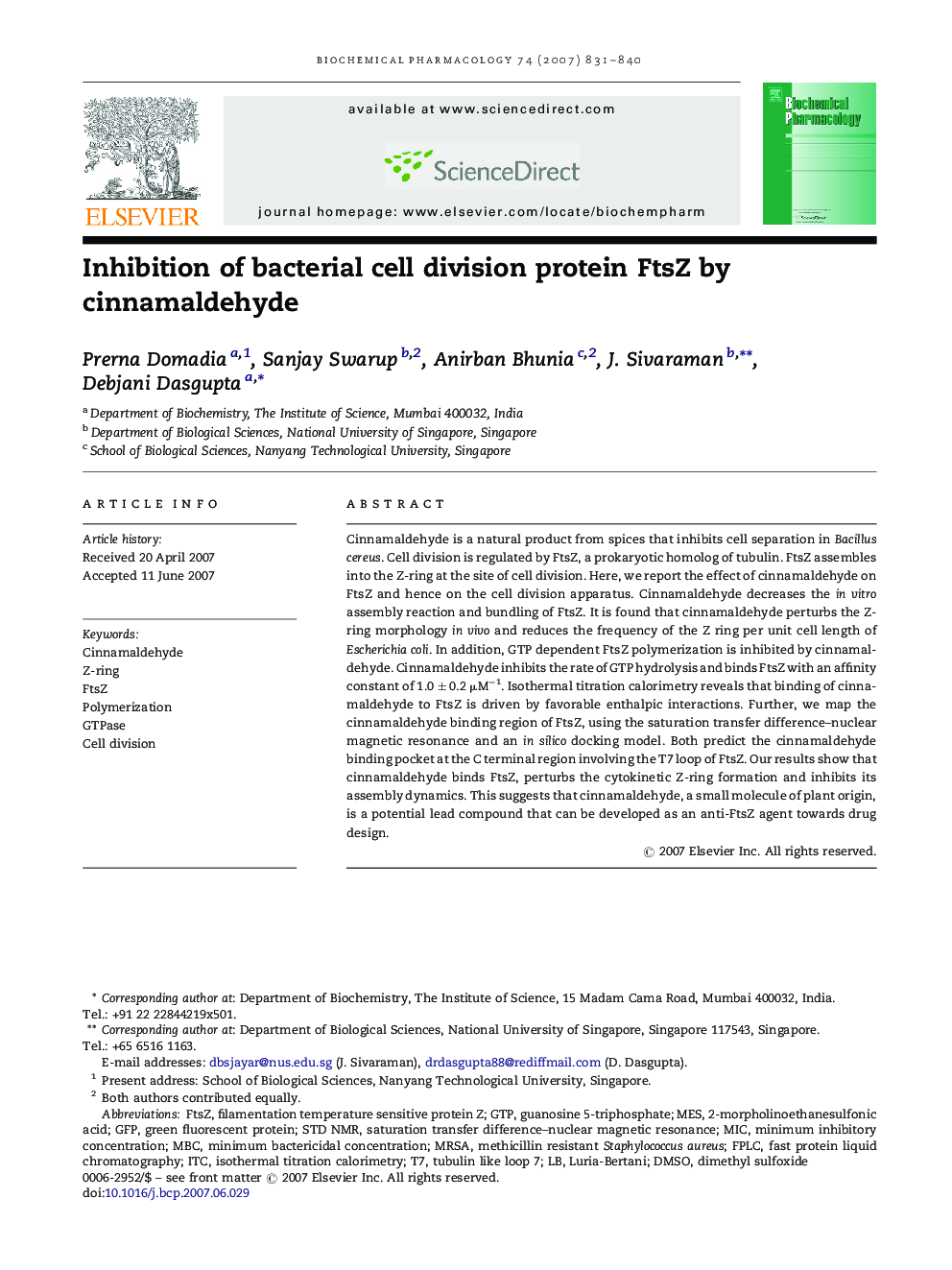| کد مقاله | کد نشریه | سال انتشار | مقاله انگلیسی | نسخه تمام متن |
|---|---|---|---|---|
| 2514833 | 1118488 | 2007 | 10 صفحه PDF | دانلود رایگان |

Cinnamaldehyde is a natural product from spices that inhibits cell separation in Bacillus cereus. Cell division is regulated by FtsZ, a prokaryotic homolog of tubulin. FtsZ assembles into the Z-ring at the site of cell division. Here, we report the effect of cinnamaldehyde on FtsZ and hence on the cell division apparatus. Cinnamaldehyde decreases the in vitro assembly reaction and bundling of FtsZ. It is found that cinnamaldehyde perturbs the Z-ring morphology in vivo and reduces the frequency of the Z ring per unit cell length of Escherichia coli. In addition, GTP dependent FtsZ polymerization is inhibited by cinnamaldehyde. Cinnamaldehyde inhibits the rate of GTP hydrolysis and binds FtsZ with an affinity constant of 1.0 ± 0.2 μM−1. Isothermal titration calorimetry reveals that binding of cinnamaldehyde to FtsZ is driven by favorable enthalpic interactions. Further, we map the cinnamaldehyde binding region of FtsZ, using the saturation transfer difference–nuclear magnetic resonance and an in silico docking model. Both predict the cinnamaldehyde binding pocket at the C terminal region involving the T7 loop of FtsZ. Our results show that cinnamaldehyde binds FtsZ, perturbs the cytokinetic Z-ring formation and inhibits its assembly dynamics. This suggests that cinnamaldehyde, a small molecule of plant origin, is a potential lead compound that can be developed as an anti-FtsZ agent towards drug design.
Journal: Biochemical Pharmacology - Volume 74, Issue 6, 15 September 2007, Pages 831–840